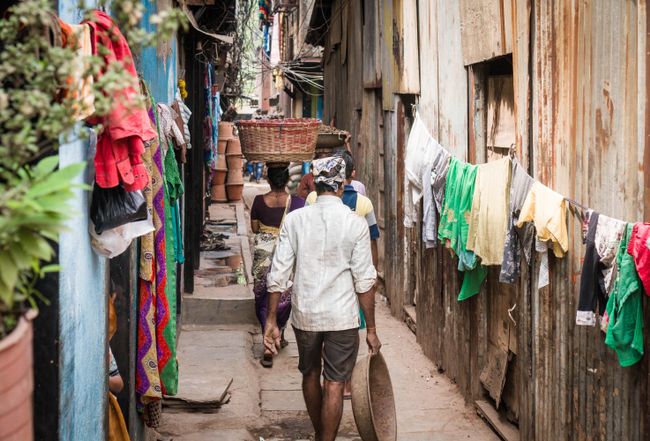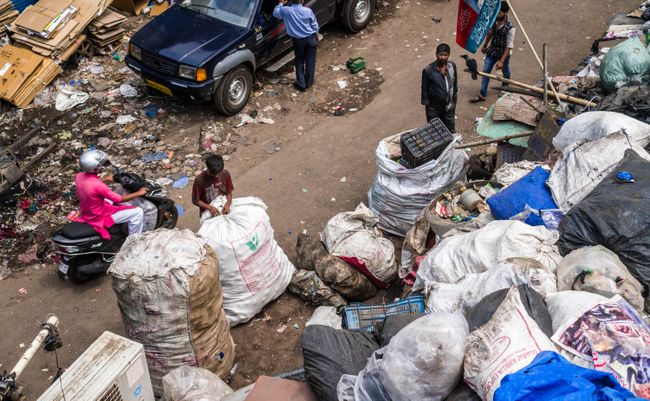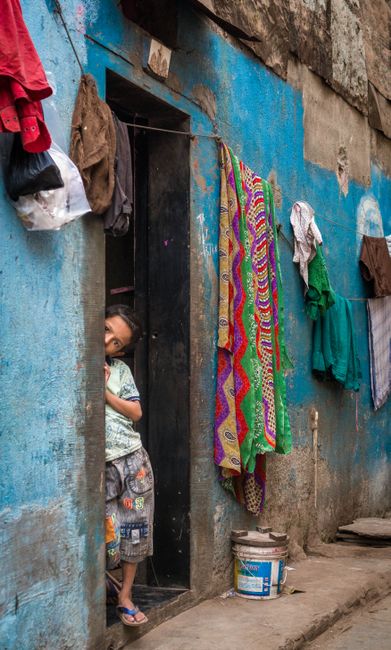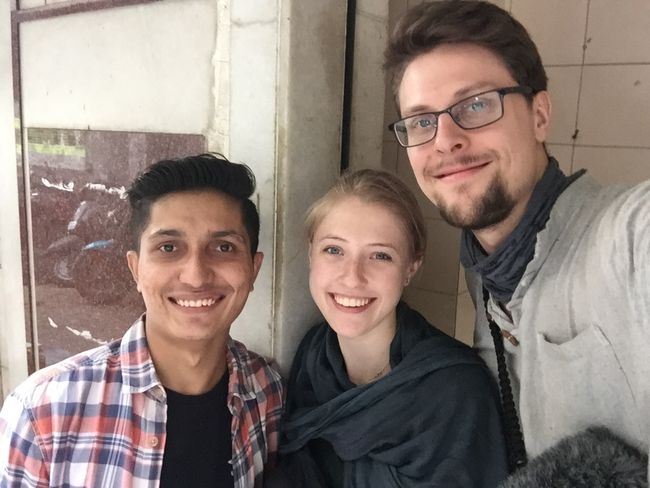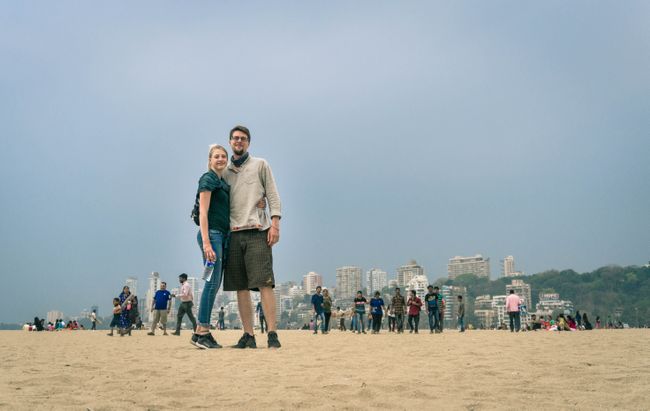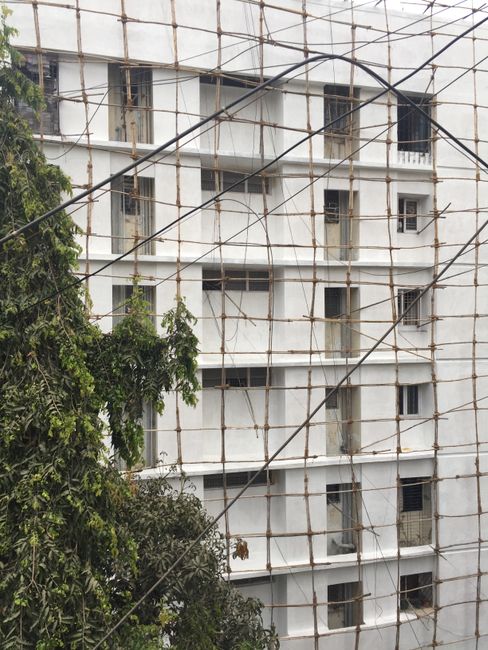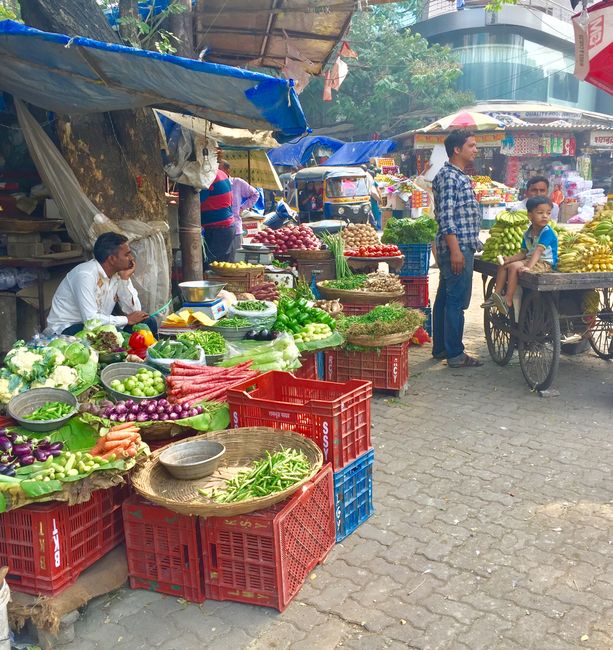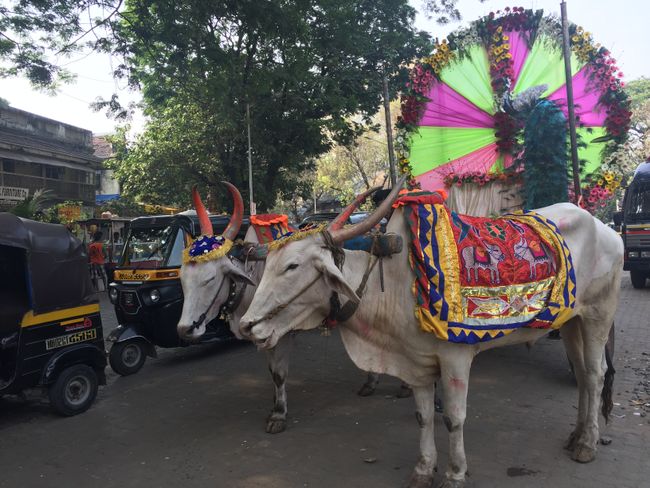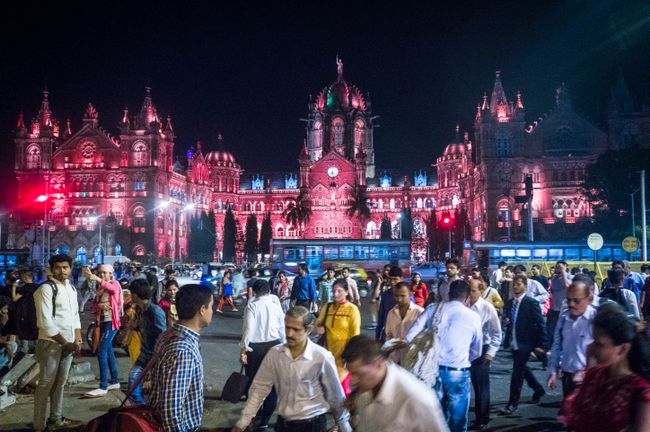Bombay / Mumbai
ຈັດພີມມາ: 18.03.2018
ຈອງຈົດຫມາຍຂ່າວ
A city of contrasts! Between nature and city, rich and poor, dirty and clean, and British architecture next to Indian barracks. In the city, you can find everything at once. Billionaires in villas with security guards and clean streets. High-rise buildings next to the beach and the Arabian Sea. Mountains of garbage in the third largest slum in the world. People everywhere. Crowded streets and something happening everywhere, no wonder with 18.4 million inhabitants (officially). Many buildings show a British influence, which looks very beautiful, but unfortunately, many things are completely run-down now. The former beauty can only be imagined today.
We only stayed one night in Mumbai in a hostel where you take a shower with insects -_-. To see the south of the city, we took a train, which was an experience in itself. We had to literally jump into the moving train and jump out again. It was very funny. And you can stand at the open door, even when crossing bridges. We still don't know exactly which class we belong to. We just jump in, no matter how people look at us afterwards. ;-)
When we heard that the largest slum in Asia is located in Mumbai, we became curious. Tours through Dharavi (as the slum is called by its inhabitants) were offered from our hostel. Such a tour is not cheap, but when they told us that half of the money goes to the slum, we were convinced. So we went on the tour through the backdrop of Slumdog Millionaire. We were prepared to see the greatest misery, dirt, suffering, and people who wanted to tear our clothes off. We believe that most of you are thinking the same right now and wondering why we did this to ourselves. Exactly for this reason: to see that what we think we know about a slum is not the case. One must imagine a slum like a city within a city. People live very close together and work (1 million people on 1.6 square kilometers!!!). They work hard and the country makes a profit of 600 million dollars a year. They sort, dry, and shred plastic waste. They process leather, sew clothes, and disassemble and reassemble old broken suitcases (these are just examples). In addition to the people who produce there, there are also street food, schools, and even hospitals. The people get paid for their work (some up to 40 dollars a day) and some of them even own a house outside the slum. The city is expensive, which is why many of them do not want to live there. Because for the people there, it doesn't matter what they have, but who they are and what they do. They process our garbage, yes, even the garbage from Europe, which is transported there by ship (we saw roofs made of Miele refrigerator cardboard boxes). The people there are friendly, don't beg, and are so busy with their work that they don't even want to take selfies with us. The people here don't want to be filmed at all, because that is their privacy, their realm. Our guide Nikesh, who was born and raised in Dharavi, pointed out to us several times that the people do not have the consciousness of living in a slum. That's why they also call it Dharavi, like the former island.
This experience is a good example of what Heike wrote to us:
If you don't travel, you don't learn anything about the world!
In just one morning, our perception of a slum turned 180 degrees.
ຈອງຈົດຫມາຍຂ່າວ
ຄໍາຕອບ (2)
Uwe
Mir fehlten die Worte beim Betrachten der Fotos. Mir fehlen sie noch, auch nachdem ich Eure erklärenden Zeilen gelesen habe. Offensichtlich kann man es nur efassen, wenn man es erlebt hat. Weiterhin Euch beiden eine spannende Reise.Jeannette
Ich habe mir Euren Beitrag gerade angesehen und gelesen. Ich bin sprachlos und fasziniert zugleich. Ich denke, nur wer so etwas einmal so nah miterlebt und gesehen hat, weiß wovon er später einmal hier in Deutschland redet. Auf jeden Fall finde ich Euren Block hier sehr toll, inspirierend und regt sehr zum Nachdenken an. Natürlich auch zum mitfreuen und staunen. Gute Reise weiterhin und ich bin schon auf den nächsten Bericht neugierig und gespannt. In diesem Sinne herzliche Grüße aus Leipzig. 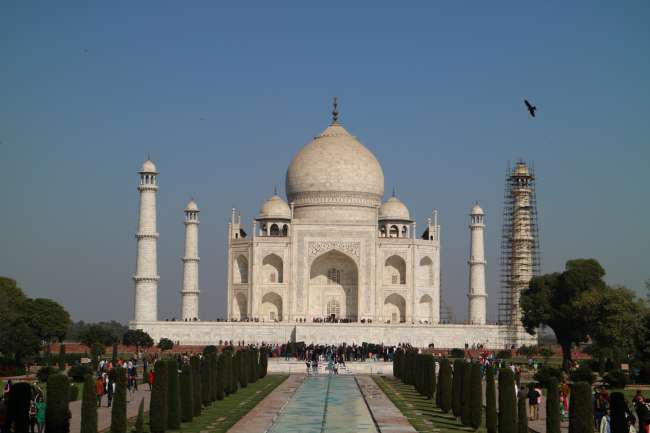
ລາຍງານການເດີນທາງ ປະເທດອິນເດຍ


